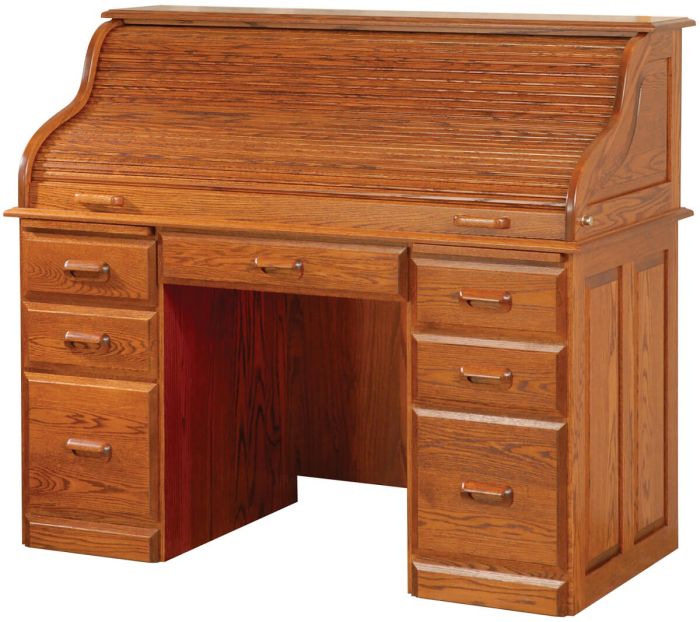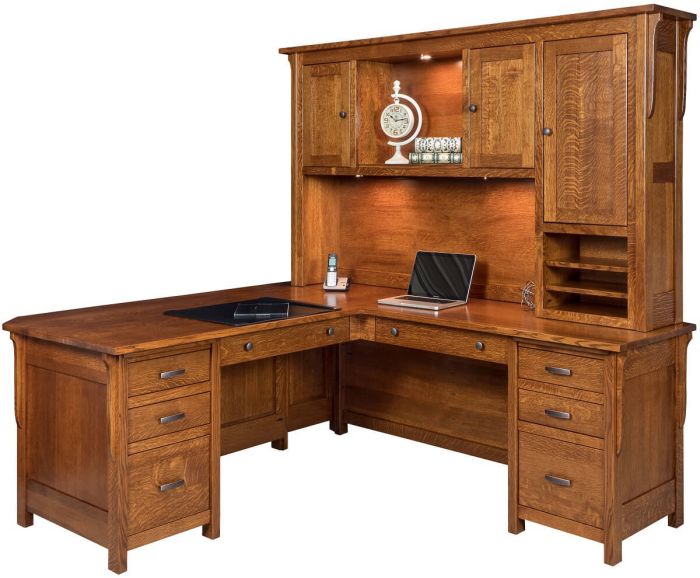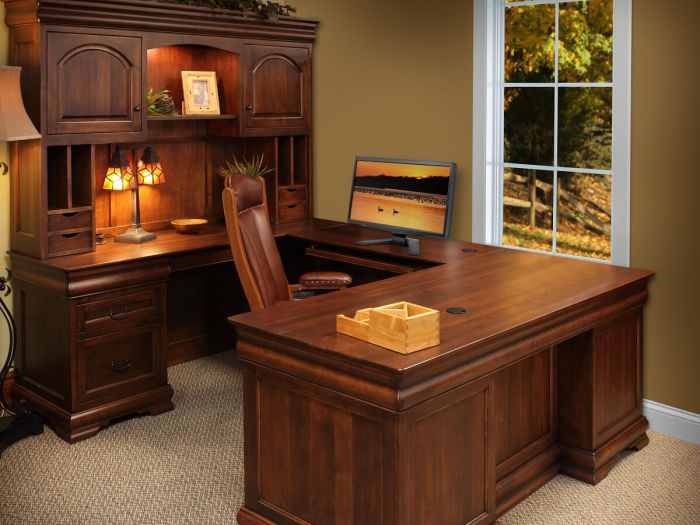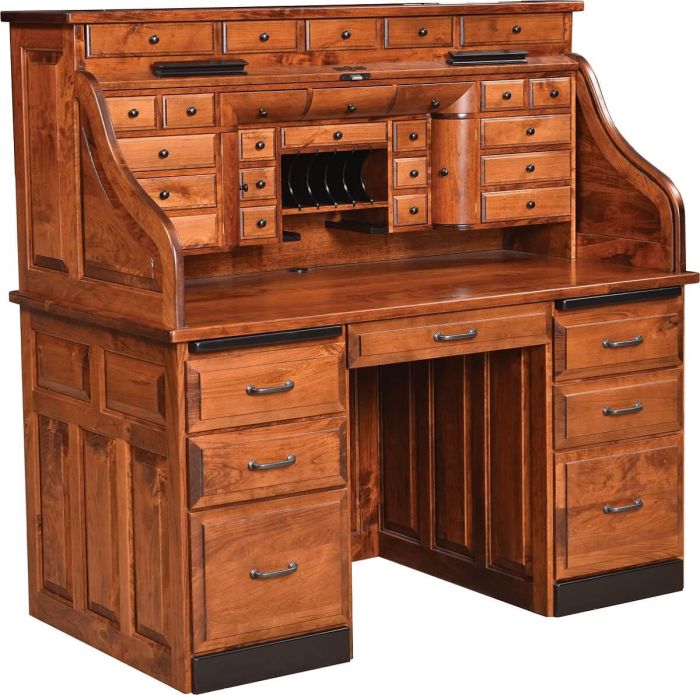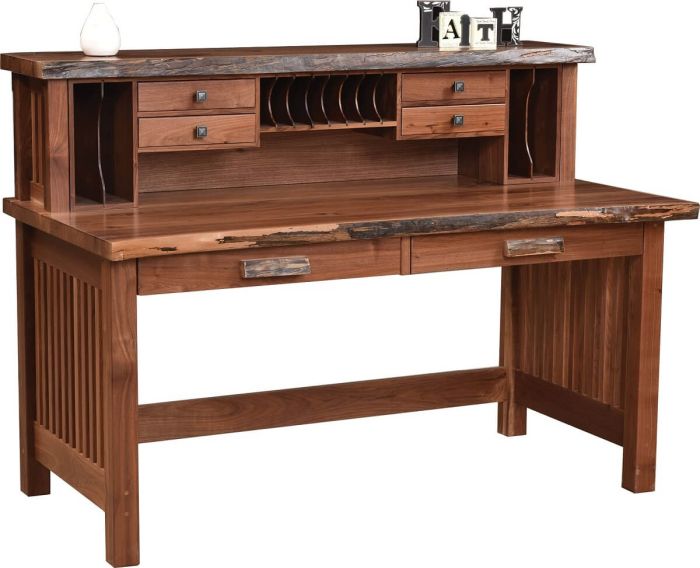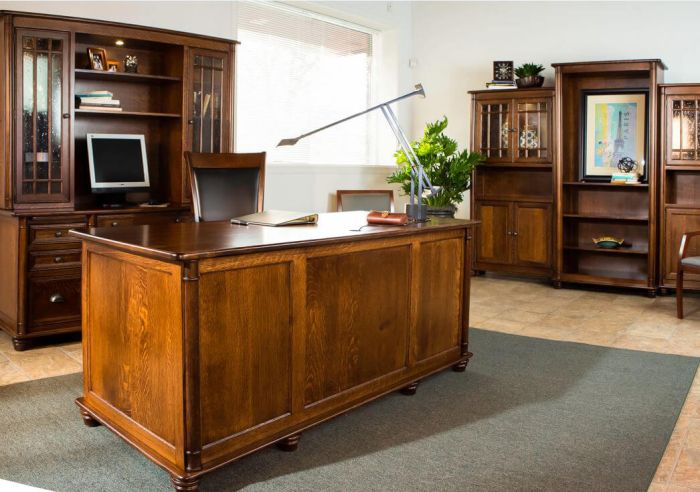Best Woods for Desks
By Bailiegh Basham · December 7, 2022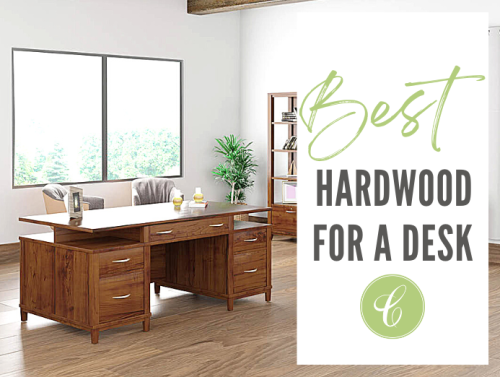
Like a loyal pet or a good friend, your desk is always there for you. Therefore, it’s crucial that you put thought into which hardwoods are best suited for desks. While there is no singular correct answer, some species are naturally better than others to endure regular usage while maintaining their sophisticated appearance. In this article, we’ll explore what to look for when choosing the best wood for your desk, and even what to request when selecting a finish and varnish.
Firstly, Steer Clear of Veneer and Engineered Imitations
As alluded to above, desks go through a lot of wear and tear. They withstand the continuous slamming of coffee cups, rough opening-and-closing of drawers, and computer monitors being dragged across the surface. Lighter wood imitations simply won’t be able to withstand years upon years of rigorous use, making such desks short-term band-aids rather than long-term solutions.
Best Hardwood Species for Desks
There are plenty of fantastic wood choices that you won’t see reflected on this list. However, if you’re stumped on which hardwoods are worth your consideration, start your research with the ones highlighted below.
Red Oak
This hardwood delivers incredible strength (1290 on the Janka Hardness Scale) but with an affordable price tag, making it subjectively one of the best woods for a desk. Other reasons to love this North American species?
- It accommodates diverse styling choices, as it’s a staple of popular decor themes like Mission and Arts and Crafts.
- It can work with nearly any coloring. Its natural tint is pleasantly warm, meaning many choose a stain that lets the natural wood shine through.
- It displays an “open” grain that, if desired, can add a touch of tradition or robustness to the office. Better yet, the dramatic pattern of the grain can help camouflage minor scratches or stains. What’s more, you can visually enhance the grain by using a darker stain (our team is happy to help you choose the right coloring).
- Generally heavy. While this may be a negative if you frequently move, you’ll realize that the wood’s heft is for the best. After all, if your dog races through the room and bumps the desk, you don’t want it to shift in response (knocking over your electronics and drinks in the process).
Quartersawn White Oak
We could not talk about red oak without bringing up its (slightly more expensive) sibling, white oak. Not only does it offer many of the benefits attributed to red oak, but this hardwood is amongst the best options for a desk because:
- More moisture and temperature resistant than red oak - Spills are inevitable. However, white oak’s closed pores make it inherently more resistant to moisture than red oak.
- Has lovely neutral undertones - If you choose to let the wood’s natural hues shine through, expect neutral tints (not too warm or too cool) that accommodate a variety of office color schemes.
- Even harder than red oak - White oak scores 1360 on the Janka Hardness Scale, meaning it’s even less susceptible to bumps and dings than red oak.
Brown Maple
There’s a lot to love about brown maple desks. It feels lavish yet doesn’t carry a lavish price tag (can you think of anything better than that?). To dive into specifics about why brown maple may be the best wood for your desk:
- Brown maple offers a smooth, consistent grain - Simply put, a maple desk feels luxurious to sit behind! That, paired with its lighter tints, may make the word “creamy” come to mind.
- Though diverse in its coloring options, it’s commonly stained or painted dark - This is because the grain can make lighter finishes appear uneven. However, dark coloring opens up the door to many rich possibilities.
- More affordable than other options - Though the price tag for brown maple is not as low as it is for red oak, it is still more affordable than many other hardwoods (including those mentioned in this list).
Cherry
Yes, cherry wood may not be the hardest of the hardwoods, and it carries a slightly higher price tag than some of the options on this list. Yet cherry has its fair share of loyal fans. So why may it be the best choice for your solid wood desk?
- Its natural, rich redness - Anyone casually acquainted with cherry wood will know it best for its inherently red undertones. For this reason, many who choose cherry for their desk opt for a varnish that displays the grain and tints in their natural states.
- Its shading changes over time, adding vibrant warmth to your wood desk - Though some may consider this to be a con more than a pro, we think that the gradual “ripening” of the cherry with age produces a beautiful hue for the betterment of your office.
- Offers a consistent grain and smoothness - Much like maple, cherry provides effortless class to your desk due to its natural patterns and texture.
Walnut
If you look at all of our North American wood options for desks, you’ll notice that Walnut tends to carry the highest asking price. This is because, as a species, it is rarer than some of the other types of trees. However, this isn’t the only reason it’s amongst the best woods for a desk.
- Harder than most other hardwoods - Though it’s not the hardest hardwood available, it certainly has a lot to offer, scoring 1010 on the hardness scale.
- Its straight grain and darker undertones are distinct and luxurious - As alluded to above, some woods are intrinsically more upscale than others, with walnut rising to the top with its rich coloring. Some would even go as far as to call its natural hue “chocolatey.” Looking for a desk worthy of a CEO or needing to impress law clients? A Walnut desk may be your best bet.
- Versatile in its adoption to different decor themes - With a grain that walks the line between subtle and eye-catching, walnut works with both contemporary and traditional office themes and everything in between.
What to Look for in a Varnish for Your Wood Desk
Solid hardwood is the best foundation possible for your new desk, but it’s not the only element that determines its longevity and beauty. One of the unsung heroes of wooden furniture is the proactive varnish!
Not all varnishes are created equal, so it’s best to inquire about this underrated facet when purchasing a desk. For example, true Amish furniture uses catalyzed conversion wood varnish (the best available) on top of the desk’s stain or paint. The “catalyst” in the name refers to a hardener that further shields the wood from scratches and liquid. What’s more, it helps preserve the coloring. Bonus, it makes the wood desk easier to clean.
Choosing the Best Stain or Paint for Your Wood Desk
Firstly, it’s important to note that most hardwoods are better suited to certain stains than others. For example, walnut wood desks tend to look their best with darker stains, while those seeking lighter coloring may be better served with white oak.
Similarly, different woods will respond differently to the same stain. Therefore, if custom ordering your desk, it’s best to receive samples prior to finalizing your choice of color.
You can view all stain options offered by Countryside Amish Furniture by clicking here.
Additionally, to view the various types of solid wood desks we can make from the hardwood of your choice, visit our Solid Wood Office Desks. Because each furniture piece is made-to-order, we can add features such as hutches and drawer locks.

